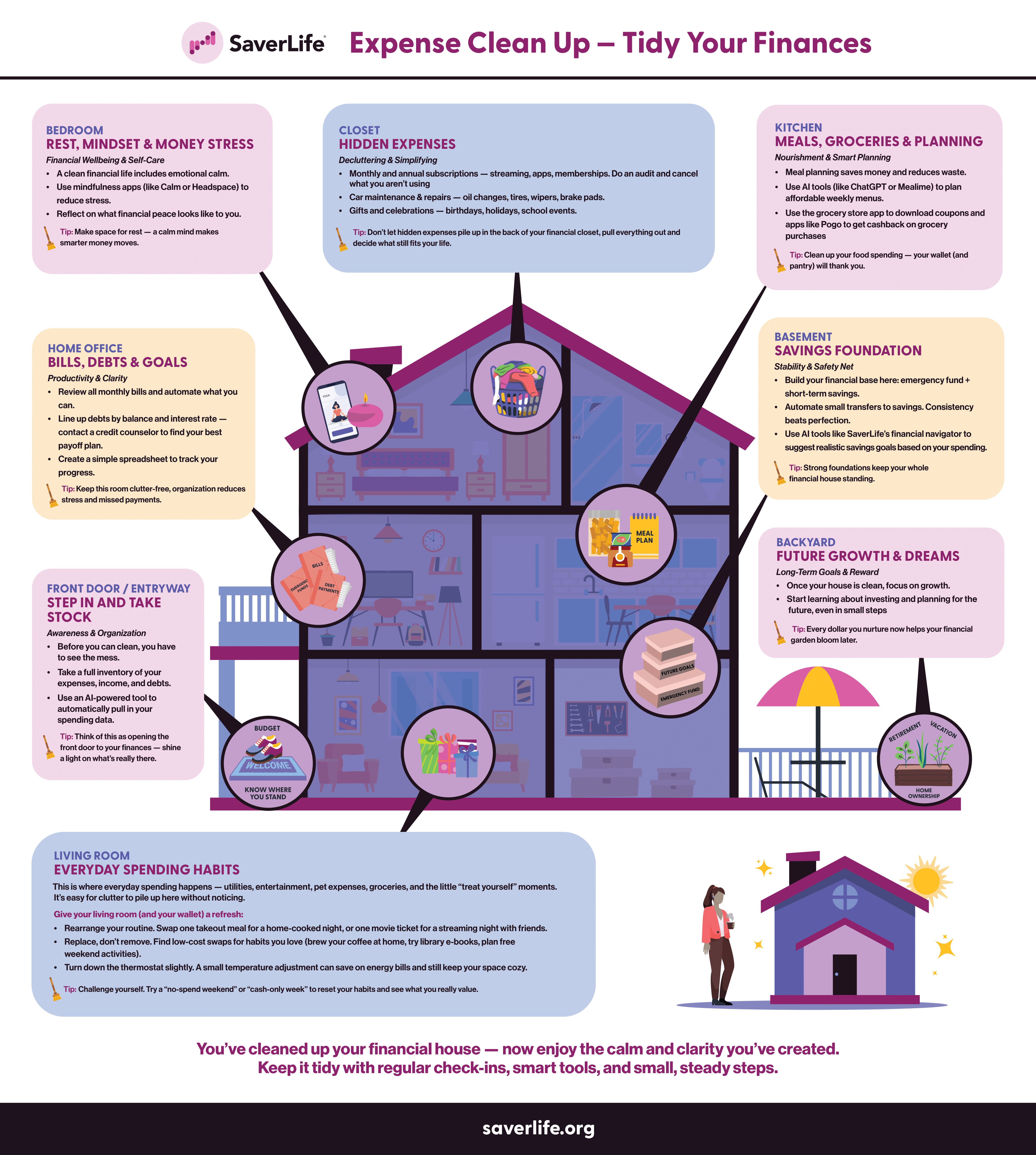
Having a plan for our money keeps us on track and lets us work towards our savings and investing goals. But how do you make a plan when your income varies?
Whether you’re an employee whose hours vary or an entrepreneur starting your own business, having irregular income can often seem like a hurdle to getting your finances in order. Don’t let this keep you from creating a plan.
Budgeting is the best way to get on top of your finances and reach your debt repayment and savings goals.
To make the process a little easier, here are 6 easy rules for budgeting with irregular income:
Rule #1: Aim for Average
The first place to start with building any budget is to understand where your money comes from. This means getting a handle on your income.
With irregular income, this can be trickier because your income is a moving target.
In this case, finding an average can be very helpful. Take time to look back over the last six months to a year of income earned and take an average. It’s important to look back over a longer period of time to capture any seasonal outliers (both highs and lows). This will give you a realistic view of what your income actually does.
Knowing the average will give you a starting point as you build out your budget. If you’re concerned that a few irregularly high pay periods might skew your average high, you can exclude them from your calculation. This will give you a lower average but could help you feel more confident in your budget.
Rule #2: Understand Your Essential Spending
Once you have an average income to work with, the next thing you’ll need to do is be sure your essential expenses are covered.
Essential expenses are those you have each month that you must pay to keep your life moving forward. Typically this includes things like your rent/mortgage payment, utilities, insurance premiums, groceries, transportation, medical expenses, childcare costs, cell phone/internet bills, debt payments, and any other recurring expenses you have. Knowing these expenses will help you create a bare-bones budget.
The easiest way to find your essential expenses is to make a list of all the bills you have to pay each month. Compare your list to your bank statements over the last six months to a year. This will help you get the correct amounts for each expense, it will also help you be sure you aren’t missing anything.
As you look at your bank statements, keep an eye out for bills that may be due at a different frequency (less often than monthly). To be sure your budget takes these into consideration, break these bills up into how much you’d need to set aside monthly to pay them when they are due. This will help you stay on budget and be prepared for what is ahead.
Once you have a list of your essential spending, compare it to your average monthly income. This will help you understand how much wiggle room you have in a “typical” month. It also gives you the most important places to put your money. Each month, when you get paid, be sure you’re covering your essential expenses first.
Rule #3: Understand Your Optional Spending/Add Ons
While it’s important to be sure your essential spending is covered, everyone has other things they’d like to buy, do, or save for that cost money. These things are your optional spending items or your add-ons.
This category includes things like eating out, coffee or drinks with friends, concerts and sporting events, or streaming services.
Look over your expenses for the last three to six months. See what trends you notice and where you commonly spend your money. Total up the average of your optional expenses and see how this compares to the wiggle room you have in your expense plan once you’ve subtracted your essential expenses from your average income.
There’s a chance you may not be able to cover all of your optional spending with your average income. That’s ok! It just means you need to prioritize.
Look carefully at your optional spending and add those things that are most important to you or that you value most into your spending plan first. Once the high-priority optional spending items are covered, you can add other expenses back in as your budget allows.
This exercise can be helpful because it lines your spending up with your values. It is especially helpful if you’re living on an irregular income. This can help you eliminate expenses based on what is most important to you in months when your income falls on the lower side of the spectrum.
Rule #4: Create a Hill and Valley Fund
One thing that can help when you live on a variable income is having a way to level out the low spots. One way to do this is to have a hill and valley fund.
A hill and valley fund is a savings account you build up during times when your income is good (the hills) that can help you offset periods of lower income (valleys). A savings account like this can help you smooth out your income and make your life a little easier.
When setting up a hill and valley fund, the first thing you need to do is determine the minimum amount you can save into the fund each month. To do this, consider your average income, essential spending, and optional spending.
It’s ok to start small. You can always increase your minimum monthly contribution over time.
If you feel comfortable enough with your budget, set up automatic transfers to get the money from your checking account into savings. If you aren’t comfortable with automatic transfers, set up a reminder on your calendar or in your phone to move the money once you get paid. Having a reminder in place will help you stay consistent with your savings, so the money is there when you need it.
There are a few things to keep in mind with your hill and valley fund:
- The minimum you save each month should fit well within your budget based on your average income. If you have a month where you make more than average (good sales, extra hours, a bonus, etc.), you’ll want to save more for your hill and valley fund to help it grow.
- The money is there when you need it. This means if a month comes when you don’t work as much or for some reason you earn less than normal, you can dip into your hill and valley fund to ensure you can cover your monthly expenses.
- It’s important to keep your hill and valley fund separate from your day-to-day spending money and even from your other savings if you can. This allows you to see exactly how much you have for those times when your income is a little lower. If you can, put your hill and valley fund in a High Yield Savings Account to take advantage of better interest rates.
Rule #5: Keep Track of Your Spending
When it comes to sticking to a budget, tracking your spending is one of the most important steps. And when budgeting with irregular income, it’s almost more important.
If you’re regularly tracking your income and spending, you can limit your spending to the money that comes in. This will help you reach your goals. Tracking your spending will also let you know if you need to pull funds from your hill and valley fund to help cover your expenses.
There are so many different methods you can use to track your spending. You can find a free or paid app, use features in your online banking platform, create or download an Excel or Google Spreadsheet, use the notes app on your phone, or with the classic pen and paper.
No one method is better than the others. The important thing is to find a method that works well for you and that you can use consistently.
Once you pick your tracking method, you’ll want to set up regular times to review your spending. This is key. Often people set up a budget or spending plan with the best of intentions, then don’t do anything with it. To truly be successful, you have to check in with your money.
Pick a time each week that you know you have 20-30 minutes to spend with your money. Then put it on your calendar and show up for it like you would an important meeting.
During your money meeting, review your income and expenses since your last check in. Once you have a good handle on where you are, look ahead to the upcoming week to see if any planned expenses might be coming up. Tracking your spending and checking in with it will help you stay on top of your money.
Rule #6: Be Flexible
The final rule for budgeting with irregular income is to be flexible. Things will always happen to push you off course when it comes to budgeting. The key when things go wrong is not to panic and to be flexible.
When something unexpected happens, like you earn less than you were expecting or an unexpected expense pops up, take a deep breath and look at your budget. Do you have money allocated towards optional spending that can be shifted for this pay period to make ends meet? Can you tap into your hill and valley fund to cover an expense? Being flexible will help you find solutions when things don’t go exactly as planned.
Another reason being flexible is important is that circumstances change. Over time, you may notice your spending habits shift or change. And that’s ok! Being flexible gives you permission to update and change your budget as life changes. Flexibility will ultimately help you be more successful.
From the outset, budgeting with variable income can seem very difficult. But, if you gather the necessary information and work to understand both your income and your spending, you can be successful.
The process takes time, and there will be some trial and error, but don’t give up. Once you get to know your average income and your essential and optional spending, you’ll be better able to manage your money.
And over time, as you build a hill and valley fund, you’ll find it easier to smooth out the trickier times of earning irregular income. Be sure to check in regularly with your money and stay flexible. You’ll get the hang of budgeting with irregular income, and you’ll make progress toward your financial goals in the process.


